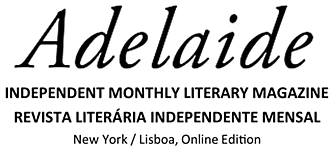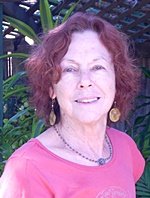BERKELEY REVISITED
By Alice Lowe
I was 42 when I first set foot on the “Cal” campus, the University of California, Berkeley. I still can feel the shockwaves—instant, intense—followed by the startled realization that I could have (should have? would have?) been there in the glory days of the ‘60s. I’d been an honor roll student in high school, but my working-class parents, neither of whom finished high school, didn’t expect or encourage me to continue my education. It was understood that I would go to work right after graduation, help at home until I moved out on my own. The school counselors never talked to me about my options in spite of my academic potential; I was steered away from college prep courses and into secretarial skills. I always assumed it was about money, my family’s lack of it and my need to earn it sooner rather than later. I’ve since learned that in 1961 the top eighth of California high school graduates were automatically admitted to University of California campuses. Fees at U.C. Berkeley were $60 a semester.
My future appeared preordained, and I didn’t know or care enough to challenge it. I took the path set before me without a backward glance. I bounded eagerly, greedily, from high school to the working world, lured by its immediate social and financial rewards, by the siren call of adulthood. Now, with the lofty cushion of hindsight, my shortcut to instant gratification stands out as a lamentable detour. I often wonder how things might have been, visualize the road not taken.
Jo Freeman attended Cal from 1961 to 1965, the years I might have been there. I don’t know Jo, but she was raised in Southern California, as I was. Hers was an educated middle-class family and her continued schooling was a given; but for that, her story could have been mine. Jo became one of the Free Speech Movement’s early leaders, and she wrote a book 40 years later about that singular time and place. At Berkeley in the Sixties became my guide through that alternate reality.
Cal had a long legacy of student activism—opposition to the Cold War and McCarthyism, to nuclear testing and ROTC on campus, to corporate greed, racism in the U.S. and apartheid in South Africa. When university administrators tried to impede student activists’ involvement in civil rights actions in the fall of 1964, the students protested the constraints on their free speech. They launched the Free Speech Movement and gave birth to the ‘60s as we know them. With the success of their campaign, the focus shifted to Vietnam. Political activism by students and disaffected youth ballooned to epidemic proportions, and Berkeley became the protest capital of the country. Passions were fueled by the Kennedy and King assassinations; peaceful protests led to hostilities with counter-demonstrators and police, then to riots, and then to the killing of four students at Kent State in 1970.
And where was I during this time? Insulated in my own little cocoon, a narrow world of earning and spending and partying. I was immune to the message of the pied pipers of peace even as I inhabited San Diego coffee houses and listened to folk troubadours strumming and humming the protest repertoire. I saw Joan Baez in concert in 1963, the same year she stood with Martin Luther King, Jr. and sang “We Shall Overcome” at the March on Washington. The next year her voice rang out on the steps of Berkeley’s Sproul Hall, and when she was arrested in 1967, she said, “I wanted to disturb the war, but I was jailed for disturbing the peace.” I went to see her every time she performed in San Diego, but it was her incandescent soprano and her hip/folkie persona that drew me, not her politics.
At 22 I married a man just out of the Marine Corps, and at the apex of anti-war protest in 1968 I was politically unconscious. I was juggling an infant, a full-time job, and a house in suburbia, more absorbed with diaper service and day care than the war, its distant casualties and its detractors. Once during that time I ran into a former high school classmate waving an anti-war banner in front of the post office across the street from the brokerage firm in upscale La Jolla where I worked. She greeted me warmly and assumed we were on the same team.
“Hey, grab a sign and join us,” she said.
I masked my discomfort with a feigned look of fellow feeling and a shrug. “I can’t; I’m at work,” I replied, as I scurried back to my office.
Two years later my marriage ended in divorce, and two years after that my ex-husband was killed in a car crash. I was a single mother with a four-year-old daughter, a working woman in a low-paying dead-end job. I was ripe for a wake-up call: Helen Reddy’s “I am woman, hear me roar.”
The women’s movement told us we didn’t have to accept second-class status and the restricted opportunities, lower wages, and sexual harassment that went with it. Activist women on university campuses—like my Cal doppelganger, Jo Freeman—believed the peace and justice movement would naturally extend to women’s issues. But the women were squeezed out of leadership and mocked when they questioned their role or raised feminist issues. They typed, phoned, and cooked while the men wrote, made decisions, and spoke about equality for all. A campaign for a birth control clinic on campus was nixed when the guys accused them of elevating their trivial concerns over more important work: fighting administrators and politicians, warmongers and imperialists, racists and capitalists. And of course it was the era of free love, and men didn’t get pregnant. “You girls will have to wait,” was the brushoff. “In the meantime, make another pot of coffee.” Tired of being marginalized and having waited long enough, the women took matters into their own hands in classrooms, boardrooms and bedrooms. They launched a crusade of their own, arguing that “the personal is political.”
The women’s movement addressed critical issues that affected my life and my daughter’s in a tangible and immediate way. I tiptoed timidly into the water, ready to break out of my snug and smug bubble. I was intimidated by the more radical feminist agenda so stuck to the mainstream, the shallow end of the pool. I read the recognized canon: Betty Freidan, Gloria Steinem, Germaine Greer. I joined the National Organization of Women, became a charter subscriber to Ms. magazine, marched for legalized abortion and the ERA. It was all so benign and bourgeois, but it was a start, my way in. And perhaps late, but I was always a late bloomer.
My fledgling feminism buckled when I tumbled headlong into a relationship with a disarming charmer who came knocking at my door (literally, for a business meeting). It started off promising: he cooked on our first date and displayed a warm and playful manner with my daughter; he was fun and intelligent and shared my values. His admiration for me was evident, but before long he was finding fault with everything I did. I’d be sexier if I put on a few pounds. I should wear more makeup. I was a lousy dancer. “Lighten up,” he said; “you’re stiff as a board.” He assured me of his affection while chipping away at my self-esteem. It took a while, but before I hit bottom I freed myself from his emotional bullying.
I needed a big change, and the decision to go to college was my salvation. I would start over, reinvent myself. I was aware of what I’d missed by not going 20 years earlier—what did I have to lose? University life—even in my late 30s, even at lackluster San Diego State, even as a single mother balancing work and child and school—was a mind-stretching, mind-boggling experience. From the first day, I knew this was where I belonged. I bounced between euphoria at my belated good fortune—better to blossom late than not at all—and pangs of regret for the short-sighted mistakes of my youth.
I gobbled up learning like a starved outcast finally welcomed to the table. The basic intro courses that many young students tolerate with resignation or disdain—philosophy, anthropology, art history—were fascinating adventures. And I wasn’t alone; I found my niche in the company of other “re-entry” (i.e., older) students, a welcome island in a sea of youth. Over time I was drawn to a loose band of left-wingers of all ages and proclivities. Their discussions were stimulating, and I found myself in harmony with their ideas. I met a man who, over the next several years, inspired me with the stories, friends and dogma of his radical past and introduced me to a stepped-up brand of political activism.
On a weekend trip to San Francisco in 1985, fresh from completing my Master’s degree, I crossed over to the East Bay and first beheld Berkeley and the Cal campus. Like Dorothy on first sighting Oz, I was mesmerized. That was the beginning. I steeped myself in the rich history, worshipped at the landmarks, replayed the events of days that already were legendary. I imagined a scenario in which I went back 25 years and chose that alternate path. I visualized myself, Forrest Gump style, taking part in this history-in-the-making: that’s me on the steps of Sproul Hall during a sit-in; there I am getting arrested and packed into a paddy wagon. Berkeley represented everything I’d missed, and I mourned the fact that I’d been comatose during the most exciting era in modern time.
I couldn’t recapture paradise lost, and I was too practical to dwell in the past. So what’s wrong with here and now? I asked myself. Look at where I’ve come! In the course of my ruminations it began to dawn on me that the two roads I’d set in opposition to each other and the wide distance between them had already started to converge. Perhaps that’s what my rebirth was about. I’d gotten my education and changed my path. I’d solidified my beliefs and was acting on them. George Eliot said: “It’s never too late to be what you might have been.”
When the documentary “Berkeley in the Sixties” came out in 1990 (pre-dating Jo Freeman’s book), I watched it with a cadre of middle-aged one-time revolutionaries and wannabes at the home of friends who’d been there in the thick of it. “Right here, that’s us!” Kathy and Terry jumped up, fingers jabbing the screen as they identified themselves among the limp bodies being dragged off by police at People’s Park. For a second I thought I saw myself in the crowd.
Now I find “Berkeley in the Sixties” on YouTube in twelve bite-sized installments. Seeing it again, 20 years later, I’m there again, so steeped in the time and place that I almost believe I was part of it. But no, I was here. San Diego may have been a conservative backwater, but the momentum did reach here even though I was oblivious at the time. I search for “San Diego in the sixties,” and I find another YouTube series. This one must be someone’s idea of a joke, however. It was all about the beaches: surfers surfing, dogs on surfboards, women in bikinis (but not on surfboards), 30 minutes of fun, fun, fun, backed up by the Beach Boys, “I wish they all could be California girls.”
My explorations—Google can get you only so far—lead to a stockpile of underground newspapers at the San Diego History Center. The San Diego Door covered local activities—an SDS demonstration in support of Dr. Benjamin Spock, a rally for anti-war GIs, a Chicano Power March—but political content was overshadowed by the counterculture trio of sex, drugs, rock ‘n’ roll: love-ins in Balboa Park, how to make your own hash, the local music scene. I strike gold in San Diego State University’s archives when the librarian wheels in the “Radical Ephemera and Underground Publications” collection. Two carts are stacked with boxes of newspapers, magazines, flyers, and the jackpot, files for each of the campus and community organizations classified as radical between 1966 and 1983: the Center for Radical Education, Faculty for Peace, Radical Student Union, Student Mobilization Committee, Veterans Against the War, People’s Peace Treaty, Peace Action Coalition, Women Against the War, Women’s International League for Peace and Freedom, and others, including Chicano, gay, and women’s rights organizations.
With my cache of evidence and having crisscrossed the paths not taken by my wayward younger self, I’m able to affirm the conjunction of worlds that first struck me in Berkeley. Virginia Woolf said, “Arrange whatever pieces come your way,” and that’s what I’ve managed to do. While an earlier wake-up call undoubtedly would have altered my course through life, I have in some ways caught up with where I would have been.
San Francisco is still my favorite getaway. My husband and I visit once or twice a year for long weekends of fun and food, art and culture. We stay at low-end boutique hotels near Union Square and eat our way around Chinatown and North Beach. We pay homage to the Beats at Vesuvio’s and City Lights Books. We take long walks along the bay past Cissy Field Beach to the Golden Gate Bridge, up Telegraph Hill to Coit Tower and down the Filbert steps to the Embarcadero, out to the funky Mission and Castro districts. We dedicate one day to the East Bay, Oakland or Berkeley.
On a recent morning we maneuver past teeming tourists lined up for the cable cars on Powell Street and descend to the BART station. The east-bound train tunnels under the bay, then emerges in Oakland, skims along on elevated tracks for a bit then burrows back into the subterranean warren. We surface to fresh air and streaming daylight in central Berkeley.
We enter the west end of the Cal campus and stroll through groves of oak and eucalyptus. The soaring Campanile, Sather Tower, looms ahead. “I’ve never been to the top,” I tell Don. He hasn’t either, so up we go. The guide tells us it’s the third tallest bell and clock-tower in the world at 307 feet. The sky is clear, and the 360-degree panorama from the observation platform spotlights the Berkeley Hills to the east and San Francisco landmarks to the west: Coit Tower asserting its respectable 210 feet, the iconic Transamerica pyramid poised like a rocket headed for Jupiter, the Golden Gate Bridge prefacing the Pacific Ocean.
The guide tells us we can stay for the playing of the carillon at noon, “but it gets pretty loud,” she says. We see the massive bells inches over our heads and make our way back down. Our destination is the Berkeley Museum to see an exhibition of California conceptual art of the 1970s. The artists’ iconoclastic thinking and unbridled creativity are unmistakably influenced by the mindset and movements launched right here in the ‘60s. It all fits together.
We pass Sproul Plaza, the scene of so much of the history that long evoked my fantasies. I gaze around the now-familiar expanse, but the palpitations aren’t as powerful as they once were. I wonder if I’ve found my answers, satisfied my curiosity. Have I exorcised those demons at last? Has familiarity bred contentment?
Cal paraphernalia spills out in front of the Student Union—racks and stacks of blue and gold shirts and shorts, hoodies and hats, scarves and socks, posters and pennants, mugs, paperweights, keychains, and stuffed bears. I flip through the shirts … hesitate … and move on. Why now after I’ve resisted all these years? We forage for lunch among Telegraph Avenue’s profusion of ethnic restaurants—Ethiopian, Russian, Cambodian—and pay our respects at the few surviving bookstores. Scruffy bearded guys and straight-haired women in long skirts and dangly earrings hawk tacky memorabilia at folding tables on the sidewalk. Tourists can recapture the era with cheap silver jewelry, etched roach clips, tie-dyed baby rompers with peace signs. A man passes by in a t-shirt that reads, “I almost went to Cal Berkeley.”
“There’s one for you,” Don says.
That would have been a fitting close to my story, but on our way back to the BART, more Cal gear in a store window catches my eye. My years of resistance desert me on the spot. Why not now, I think. I want to commemorate my pilgrimage. I choose a dark blue, short-sleeve, v-neck tee with “Cal” emblazoned on the front in gold script. Now when I wear it, UCB graduates—they’re everywhere—call out, “Go Bears!” and I respond in kind. Surely I’ve earned honorary alumni status.

About the Author
Alice Lowe reads and writes about life and literature, food and family. Her personal essays have appeared in numerous literary journals, including 1966, The Baltimore Review, Crab Creek Review, The Millions, Permafrost,and The Tishman Review. Her work is cited among the Notable Essays in the 2016 Best American Essays and has been nominated for the 2016 Best of the Net Anthology. Alice is the author of numerous essays and reviews on Virginia Woolf’s life and work, including two monographs published by Cecil Woolf Publishers in London. Alice lives in San Diego, California and blogs at http://www.aliceloweblogs.wordpress.com



















